Effective immediately masking is required for everyone when present on all inpatient units, in the Emergency Department (ED), the Urgent Care Centre (UCC), and the Children’s Outpatient Centre (COPC).
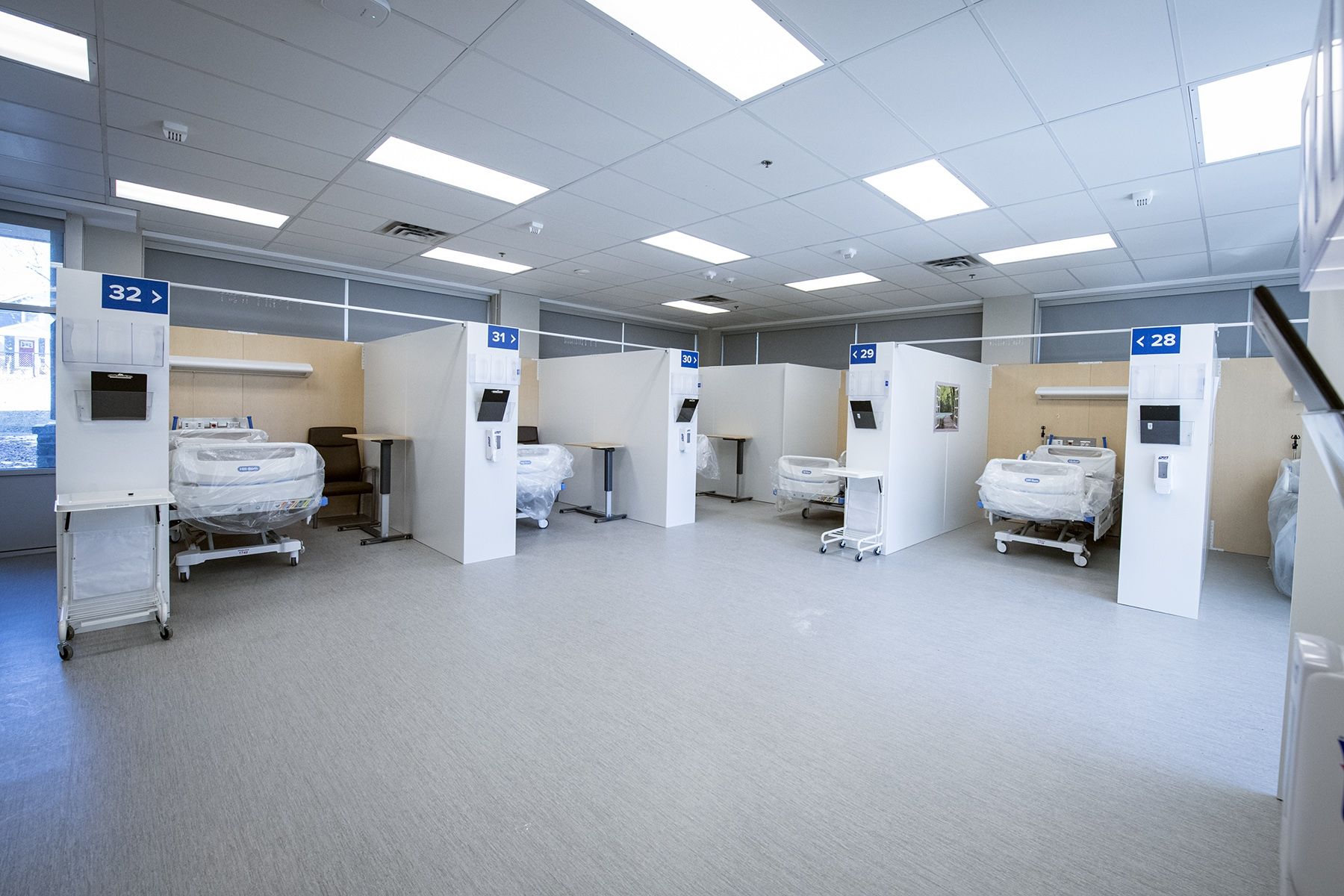
Kingston Health Sciences Centre (KHSC) today unveiled its KHSC Union Street Site, a temporary alternate health facility designed to be quickly activated in the event of hospital capacity challenges due to COVID-19. The site is not currently in operation.
The 24,500-square-foot facility, located at 340 Union Street, was readied at the request of the Ministry of Health to help ensure capacity at KHSC’s Kingston General Hospital (KGH) site for the sickest patients should COVID-19 patient volumes surge.
If activated, the 70-bed facility would provide care for non-COVID, medically stable patients who still require clinical support before discharge. Patients would receive the same safe, high quality care provided at the KGH and Hotel Dieu Hospital sites of KHSC.
The temporary facility is stocked and ready to go with supplies, equipment and technology, including access to basic lab testing and diagnostic imaging. Medical and support teams are prepared to be rapidly mobilized when needed.
“No one wants the surge in COVID-19 activity that would trigger the opening of the Union Street Site, but we are well prepared if called upon by the Ministry,” says Dr. David Pichora, president and CEO of KHSC. “We now have a strong safety net of space, staffing and services in place that would help us to continue providing the same level of medical care that patients receive across KHSC.”
The Union Street Site is located on property owned by Queen’s University, which is now leasing the former Gibson Wing to Providence Care for a new transitional care centre that will open in 2021. KHSC will use a portion of the main floor for the alternate hospital facility as part of its COVID-19 pandemic preparedness plans.
“We are grateful to Infrastructure Ontario, Queen’s University and Providence Care for their support,” says Pichora. “It is vital that we have the tools at hand to respond to whatever the pandemic brings and these partnerships have made additional capacity possible if COVID-19 challenges our resources.”
Gallery

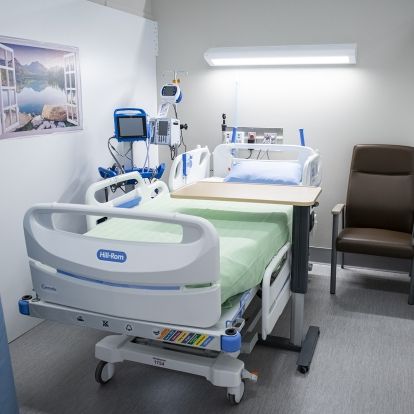
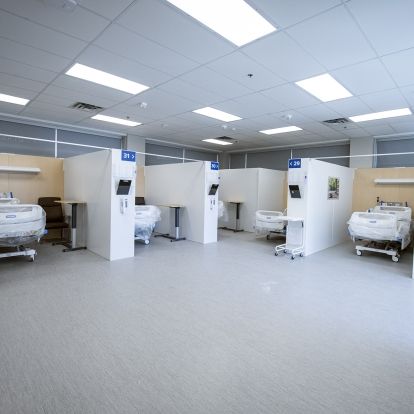

If activated, the 70-bed facility would provide care for non-COVID, medically stable patients who still require clinical support before discharge.
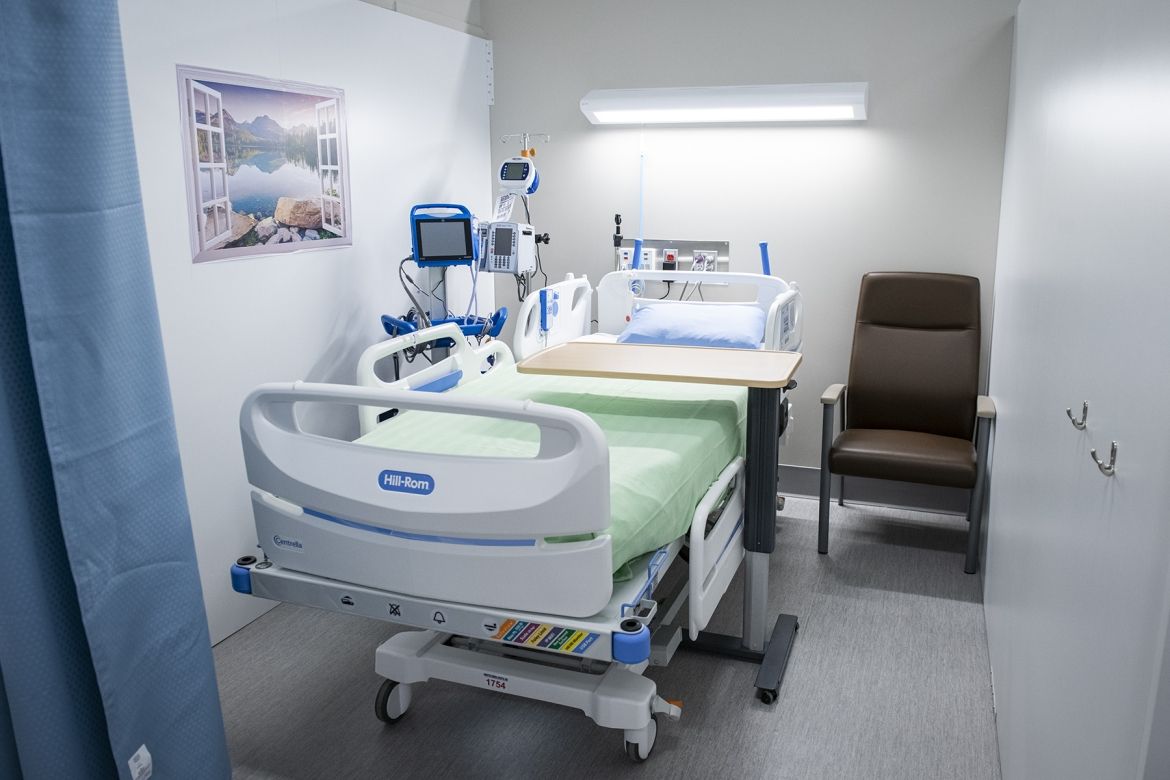
A patient care area at the Union Street site.
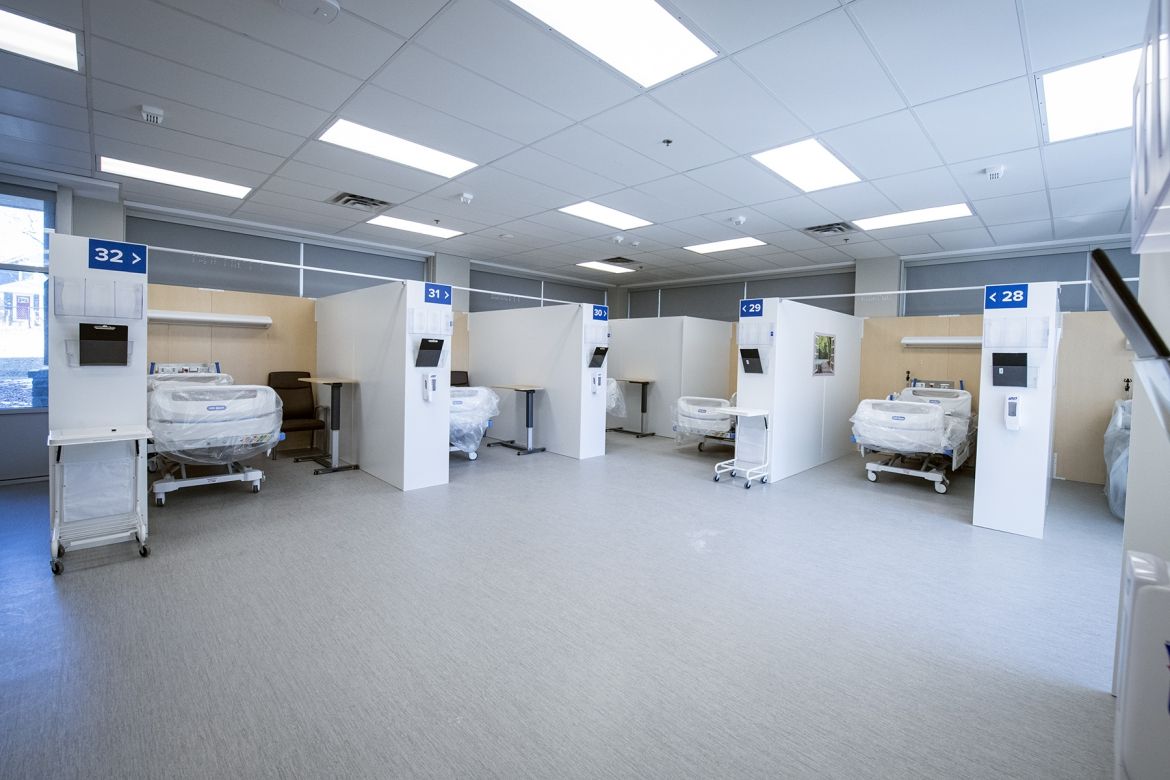
A patient care area at the Union Street site.



